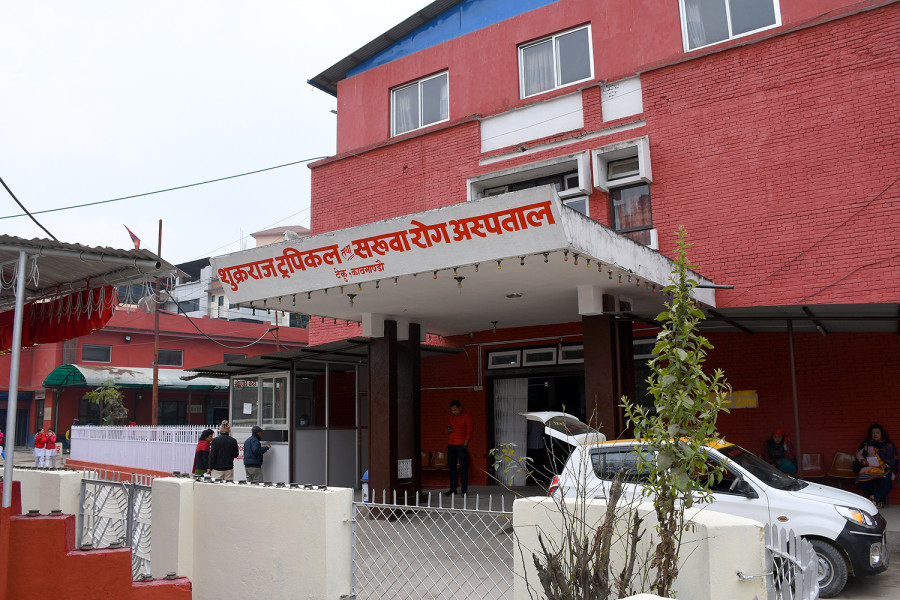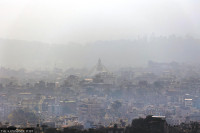Health
Doctors released two more patients suspected of having coronavirus without waiting for test results
The tests, which can now be conducted at the National Public Health Laboratory, showed no presence of the coronavirus but experts say doctors should have waited for the results.
Arjun Poudel
After releasing one Nepali who later tested positive for the new coronavirus, the Sukraraj Tropical and Infectious Disease Hospital in Teku on Monday morning discharged two others without waiting for their test results.
A 28-year-old Nepali patient, who returned from Shanghai on January 19, was admitted to the hospital on January 21 with respiratory complications. He was discharged despite being suspected of harbouring the new strain of coronavirus that is currently wreaking havoc across the world.
Another patient, a Nepali-American man, was also released on Monday, after being admitted on Sunday evening.
On Monday evening, a press statement from the Epidemiology and Disease Control Division said that coronavirus had not been detected in any new patients.
Blood samples and throat swabs from both patients had been sent to the National Public Health Laboratory, which operates under the Department of Health Services, for testing. The results were due back later on Monday but the patients were discharged without waiting for the results, according to doctors at the hospital.
“The men were discharged after no additional signs suggested that they were infected with the new strain of coronavirus,” Mahendra Prasad Shrestha, spokesperson for the Health Ministry, told the Post.
The National Public Health Laboratory began testing for the coronavirus from Monday, after receiving test kits via the World Health Organization. Previously, all test samples had to be sent to the WHO’s Collaboration Centre in Hong Kong.
Earlier on January 17, doctors at the Teku hospital had discharged a Nepali doctoral student who had returned from Wuhan with respiratory complications. His specimens had been sent to Hong Kong for testing but he too was released before the results came in. The specimens ultimately tested positive for the coronavirus.
The Health Ministry on Friday had claimed that the man was under observation, but according to officials at the ministry’s Epidemiology and Disease Control Division, officials only spoke to the man via telephone, inquiring after his health. When the man replied that he was in good health, officials did not ask him to come in for a check-up. No one is monitoring his activity, they said.
According to public health experts, the authorities do not appear to be serious about the coronavirus outbreak, which has already killed 81 people in China and infected thousands across the globe.
Their decision to discharge multiple individuals without waiting for the results to come in shows their negligence, said Dr Baburam Marasini, former director of the Epidemiology and Disease Control Division.
“By the time the report came in, the patients could have met and infected several people, including family members, relatives, neighbours and others," said Marasini. “The decision to discharge patients before confirming whether they are free of the virus shows sheer carelessness on the part of the authorities.”
Despite six major disease outbreaks in the past 17 years, Nepal’s health authorities have failed to adapt and learn, placing the lives of hundreds of thousands of people at risk, said Marasini.
In 2002, Severe Acute Respiratory Syndrome (SARS), a highly contagious disease spread to 26 countries, infected over 8,000 and killed hundreds. In 2007, the highly pathogenic H5N1, known as bird flu, also spread to several countries and killed hundreds. In 2013, the Ebola virus outbreak claimed hundreds of lives in Africa.
“In every incident, the UN health agency issues an alert and asks member countries to start preparations,” said Marasini. “But we learned nothing; even the health desk at the only international airport became active after two weeks of the outbreak of a new strain of coronavirus.”
Given its lack of infrastructure and trained medical personnel, Nepal is ill-equipped to deal with a massive outbreak of disease. But the country is especially vulnerable to globe-hopping diseases like modern-day pandemics as Nepali students and businesspeople travel frequently to and fro while tourists from all over the world come into Nepal.
The current outbreak, which originated in the central Chinese city of Wuhan in Hubei province, could be carried into Nepal by the thousands of Nepali students who study in China, the business people who work in China or the Chinese tourists who visit Nepal. The country hopes to attract 350,000 Chinese tourists under its Visit Nepal 2020 campaign.
With news breaking of the first coronavirus case in Nepal, members of the public have been seeking more information on the number of people being tested and infected, the preventive measures to take, and what to do in case of an outbreak. So far, the Health Ministry has not issued any preventive or precautionary guidelines and is instead attempting to obfuscate information.
Officials at the Epidemiology and Disease Control Division said that they had been barred from speaking to the media while Shrestha, the Health Ministry spokesperson, diverted all phone calls after providing a perfunctory statement.
At least 81 people have died and over 3,000 people have been infected by the new strain of coronavirus, dubbed ‘novel coronavirus, since the outbreak in Wuhan, according to the BBC. In the span of a week, the virus has spread across China and to several countries in Asia, Europe and the United States.




 7.12°C Kathmandu
7.12°C Kathmandu













%20(1).jpg&w=300&height=200)
